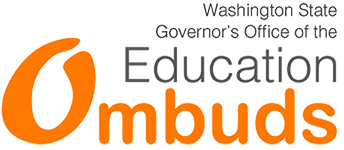General Transportation
The operation of each local school district's student transportation program is the responsibility of the School Board. Each district must develop a plan for transportation, including deciding which students will be eligible for transportation and what routes are most appropriate.
Action Steps for Understanding/Accessing Transportation
How can I find out whether my child can ride the bus or has to walk? Where the bus stop is located? What time the bus will arrive?
- Start by looking on your school district’s website for a copy of their policies specifying school bus rules and bus routes (mapping zones). Contact your district office if unable to locate an electronic copy of these policies. Your school district decides which students are eligible to receive transportation services to and from school based on their mapping zones and safe walking areas.
- Safe walking areas are identified as non-hazardous areas around the school with an adequate access and with a walking distance of less than one mile. Transportation is generally provided for students whose route stop is outside the walking area. (See relevant rules RCW 28A.160 and WAC 392-141-340 for details.)
My child will not be attending our neighborhood school; can my child ride the school bus?
- It depends. If a parent chooses to have a child attend a school outside of the assigned area, transportation is usually the parent’s responsibility. Parents can check with the district’s transportation department to see if space is available.
- If a child is placed at a different school by the district, the district generally provides transportation.
- If a student meets the definition of “homeless” under the McKinney Vento Act, the child may be able to receive transportation within the district or to another district to continue at the same school.
- Some students with disabilities are eligible to receive transportation and/or specialized transportation supports as part of an Individualized Education Program. For more information, see our Guide on Protecting the Rights of Students with Disabilities, available on our website.
What can I do if I am concerned about my child’s safety on the bus or at the bus stop?
- Start by talking with the bus driver to learn more. If concerns are not resolved, try contacting the district’s transportation department and your child’s principal. Information about general rules for safely loading and unloading students, location of bus stops and what to do in emergencies is included in the School Bus Driver Handbook developed by OSPI: https://www.k12.wa.us/sites/default/files/public/transportation/pubdocs/sbdhandbook.pdf.
- If you are concerned that your child is being harassed or bullied on the bus, talk to the driver and report the incident to your child’s principal. You can find links to sample Incident Reporting Forms on our Bullying, Harassment and Intimidation page on our website at https://www.oeo.wa.gov/en/education-issues/bullying-harassment-and-intimidation.
The Office of Superintendent of Public Instruction (OSPI) has developed a comprehensive booklet outlining the rules and policies for transportation services within Washington Public Schools. You can find this information on OSPI’s Transportation page: https://www.k12.wa.us/policy-funding/student-transportation.
Relevant Rules for Operation of Student Transportation Programs
Information pertaining to funding for student transportation, school bus driver training and qualifications, and bus routes can be found in RCW Chapter 28A.160.
Rules regarding requirements for bus drivers, requirements for loading and unloading, safe bus stops, emergencies and harassment on the bus can be found in the “School Bus Driver Handbook” developed by OSPI at: https://www.k12.wa.us/sites/default/files/public/transportation/pubdocs/sbdhandbook.pdf.
Definitions and rules about rights of students meeting the definition of “homeless” under the McKinney Vento Act, homeless status and eligibility can be found at OSPI’s Homeless Education page, https://www.k12.wa.us/student-success/access-opportunity-education/homeless-education.
